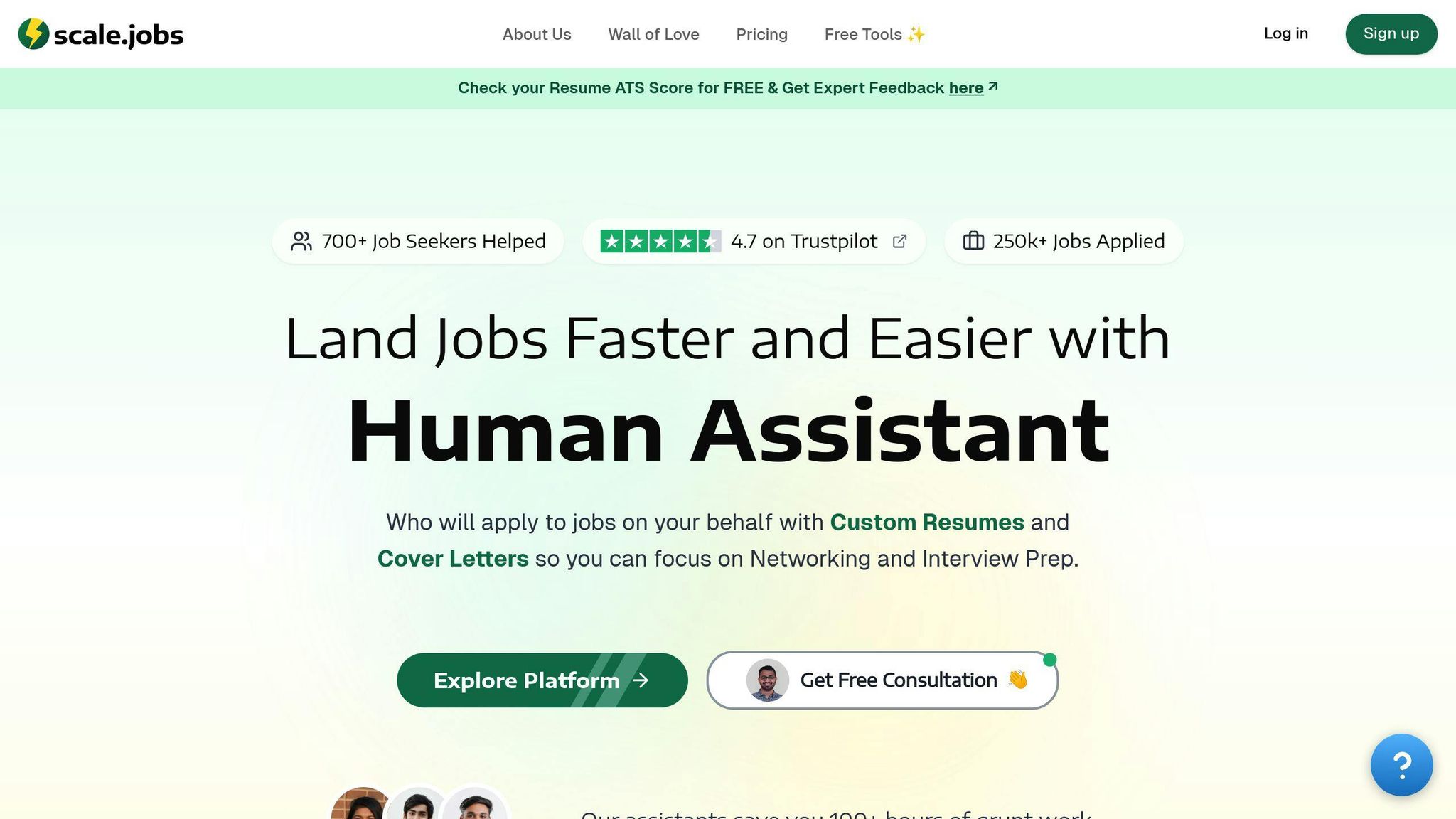How to Build Mentorship Programs for Career Growth
Learn how to build effective mentorship programs that enhance career growth, improve employee retention, and foster meaningful connections.

Mentorship programs are proven to boost career growth and employee retention. Here's how to create an effective one:
- Start with Clear Goals: Define the program’s purpose (e.g., career transitions, leadership growth, skill building).
- Structure the Program: Use formats like one-on-one or group mentoring with monthly 60-90 minute sessions.
- Match Participants Thoughtfully: Pair mentors and mentees based on career stage, goals, and expertise.
- Set Guidelines: Establish confidentiality, communication protocols, and progress tracking.
- Provide Resources: Offer tools like goal-setting templates, discussion guides, and progress trackers.
- Track Success: Measure engagement, goal completion, and career advancements, and collect feedback to improve.
Mentorship programs not only help individuals grow but also strengthen organizations by improving retention and satisfaction rates. Ready to create one? Let’s dive in.
7 Steps to Creating a Mentoring Program
Setting Goals and Planning the Mentorship Program
A strong mentorship program begins with clear goals and careful planning. Research shows that organizations with well-defined mentorship objectives experience 72% higher retention rates among participants compared to those without.
Defining the Program's Purpose
The purpose of a mentorship program should align with promoting career growth and addressing specific development needs. Start with a needs assessment to pinpoint skill gaps and ensure the program supports both organizational and personal goals.
| Program Focus | Key Objectives |
|---|---|
| Career Transitions | Skill development, industry insights - ideal for early-career professionals and job changers |
| Leadership Growth | Management skills, strategic thinking - designed for high-potential employees |
| Skill Building | Technical expertise, soft skills - perfect for specialists and recent graduates |
| Professional Development | Networking opportunities, career planning - valuable at all career levels |
After defining the program's purpose, the next step is to create a structure that supports these goals.
Creating the Program Structure
The structure should fit the organization’s size and participants' availability. To maintain engagement without causing burnout, monthly sessions of 60-90 minutes work well.
| Format Type | Benefits |
|---|---|
| One-on-One Mentoring | Personalized guidance, stronger relationships |
| Group Mentoring | Diverse perspectives, peer learning, efficient use of resources |
| Mixed Format | Flexibility, varied learning experiences |
Establishing Guidelines for Participants
Clear guidelines are essential for setting expectations and ensuring accountability throughout the program.
| Guideline Component | Purpose | Implementation |
|---|---|---|
| Confidentiality Agreement | Protect sensitive information | Signed document by both mentor and mentee |
| Communication Protocol | Define interaction expectations | Regular check-ins, agreed response times |
| Progress Tracking | Monitor development progress | Goal-setting framework, milestone reviews |
"Mentoring is a powerful developmental activity because it provides social learning opportunities that are essential for career growth." - Management Concepts
Establish clear boundaries, such as meeting schedules, communication norms, and conflict resolution processes. Research indicates that programs with structured guidelines see higher completion rates and greater participant satisfaction.
Once goals and guidelines are in place, the next step is to focus on effective mentor-mentee pairing for the best results.
Pairing Mentors and Mentees Effectively
Creating strong connections between mentors and mentees is the backbone of any successful mentorship program. In fact, 75% of executives credit effective mentoring relationships for their career achievements.
Choosing the Right Mentors and Mentees
Selecting the right participants involves weighing several factors to form productive relationships. Matching based on experience levels and career goals is especially important.
| Selection Criteria | Mentor Considerations | Mentee Considerations |
|---|---|---|
| Career Stage | Extensive experience in the field | Clear goals for personal growth |
| Expertise Areas | Proven leadership capabilities | Specific skills needing improvement |
| Time Commitment | Consistent availability | Willingness to actively participate |
| Industry Knowledge | Up-to-date market insights | Alignment with desired career path |
The goal is to close experience gaps while ensuring both parties communicate effectively. For example, a mid-career professional looking to switch industries would benefit from a mentor who has already made a similar transition.
Methods for Matching Participants
A structured approach to pairing ensures relationships that are both effective and enduring. Many programs now blend traditional methods with technology to create better matches.
| Matching Method | Benefits | Implementation Tips |
|---|---|---|
| Survey-Based Assessment | Matches based on detailed data | Include questions on goals and skills |
| AI-Powered Platforms | Quickly processes participant info | Use algorithms for compatibility |
| Interview Process | Offers deeper insight into preferences | Focus on mentoring styles and goals |
| Blind Matching | Reduces unconscious bias | Match based on skills and experience |
Some practical strategies to improve matching include:
- Structured Interviews: Discuss compatibility and mentoring styles in detail.
- Early Compatibility Checks: Monitor the initial stages of the relationship to ensure a good fit.
- Feedback-Driven Adjustments: Use participant input to refine the process over time.
Once pairs are matched, the next step is setting them up for success in their mentoring journey.
Preparing Mentors and Mentees for Success
Once mentors and mentees are paired, the next step is making sure they're ready to succeed.
Conducting Orientation Sessions
Orientation sessions lay the groundwork for effective mentoring by focusing on two main areas:
| Focus Area | Purpose | Key Components |
|---|---|---|
| Role & Goal Alignment | Set expectations and objectives | Responsibilities, time commitments, career milestones |
| Communication Skills | Promote effective dialogue | Active listening, feedback techniques, conflict resolution |
Interactive activities, like case studies of successful mentorships, can make these sessions more engaging and practical.
Providing Practical Resources
Equipping mentors and mentees with the right tools is crucial. Some helpful resources include:
| Resource Type | Purpose | Example |
|---|---|---|
| Goal-Setting Templates | Track progress effectively | Career development roadmap |
| Discussion Guides | Structure regular meetings | Monthly conversation starters |
| Development Plans | Plan career growth | Skill-building checklist |
| Progress Trackers | Monitor relationship progress | Achievement log |
Maintain a well-organized digital library, update materials regularly, and provide easy access to training resources. Regular check-ins with participants can also help uncover new resource needs and ensure the program stays aligned with their goals.
Once mentors and mentees are prepared, the focus shifts to building strong, productive relationships.
Encouraging Productive Mentorship Relationships
Building a successful mentorship relationship takes effort and regular engagement from both the mentor and mentee. Here's how to create connections that truly support career growth.
Keeping Communication Consistent
Consistent communication is key to any mentorship. Scheduling monthly meetings as a foundation, along with weekly or bi-weekly updates, keeps the relationship active and focused. Adding quarterly reviews allows both parties to assess progress and make adjustments to goals, ensuring long-term success.
Establishing Trust Between Mentor and Mentee
Trust is the backbone of any effective mentorship, and it takes time and effort to build. Lisa Z. Fain, CEO of Center for Mentoring Excellence, explains:
"Building trust takes time. With time, intention, and attention across each level of trust, your mentoring initiatives will be strengthened and result in better outcomes."
This trust grows through clear communication, consistent follow-through, and organizational support like training and resources. When both mentors and mentees are reliable and open in their communication, they create a positive space for learning and growth.
Organizing Activities to Drive Career Growth
Once trust is in place, mentorship programs can focus on specific activities that help mentees grow their skills and advance their careers. Workshops, career planning sessions, and hands-on projects provide practical experience and clear direction.
A great example of this is My Brother's Keeper, Inc., founded by former NFL player Harry F. Sydney III. Over its 22 years, the program has made a lasting impact. Participant Andrew S. shares:
"The best part of my mentoring relationship at My Brother's Keeper is the fact that I have gained a trustworthy supporter, a confidant, an advocate, and an ally."
Measuring and Improving the Mentorship Program
Tracking Program Success
To evaluate how well your mentorship program is working, focus on three main metrics:
| Metric Category | Examples | Target Goals |
|---|---|---|
| Engagement | Active mentoring relationships, session frequency | 80% participation rate |
| Progress | Goals achieved, skill development | 85% goal completion |
| Business Impact | Career advancement, job satisfaction | 75% promotion rate |
Start by establishing baseline data and track progress every quarter. This helps you spot trends and adjust as needed. Regular feedback collection is also key to keeping the program on track with its objectives.
Collecting Feedback from Participants
To understand how the program is performing, use multiple feedback methods. A mix of tools ensures you gather a complete picture of participant experiences.
"Regular evaluation is crucial for identifying areas for improvement, making necessary adjustments, and ensuring that the program remains aligned with its objectives. This helps maintain participant engagement and ensures the program's long-term effectiveness."
Structured feedback methods to consider include:
- Monthly surveys and quarterly evaluations: These provide ongoing insights into participant satisfaction and challenges.
- Semi-annual focus groups: A more in-depth way to gather qualitative feedback.
- Annual program reviews: A comprehensive look at the program's performance and areas for growth.
This feedback serves as the foundation for refining the program and making it more effective.
Making Program Adjustments
Feedback and metrics are your roadmap for improving the mentorship program. By analyzing this data, you can make targeted changes to better meet participants' needs. Research on government and nonprofit programs shows that adapting based on participant input leads to better outcomes.
Key areas to reassess and refine include:
- Mentor-mentee matching processes: Ensure compatibility for stronger relationships.
- Training resources and support materials: Update tools to address evolving needs.
- Communication protocols: Streamline how mentors and mentees connect.
- Goal-setting frameworks: Help participants set and achieve meaningful objectives.
Document every change you make and measure its impact quarterly. Many modern mentorship programs now rely on data-driven strategies to evolve, ensuring participants achieve their career development goals effectively.
Using Tools and Services to Support Mentorship
Once mentorship relationships are established and progress is being tracked, the right tools and services can help take things to the next level. These digital resources make it easier to manage mentorship programs, so participants can focus on their career growth and personal development.
Scale.jobs: Simplifying Job Applications

Scale.jobs is a great resource for:
- Recent graduates entering the workforce
- Professionals facing layoffs and seeking new roles
- Career changers exploring fresh opportunities
- International workers navigating visa-related challenges
By outsourcing job applications, mentees can dedicate their time to:
- Building networking skills
- Preparing for interviews
- Working on professional development goals
- Strengthening industry knowledge
Free Tools for Jobseekers
Free tools can play a key role in mentorship programs, especially when it comes to career development. Here are some examples:
| Tool Type | Purpose | How It Supports Mentorship |
|---|---|---|
| Resume ATS Checker | Tailors resumes for ATS | Helps mentees refine their resumes |
| Interview Questions Predictor | Prepares for interviews | Structures mock interview sessions |
| Job Applications Tracker | Tracks application progress | Keeps mentees organized |
| Salary Predictor | Sets realistic salary goals | Aids in negotiation preparation |
To get the most out of these tools, mentorship programs should:
- Provide training on how to use them effectively
- Hold regular check-ins to review progress
- Collect feedback on tool usage
- Continuously update resources based on mentee needs
Conclusion: Building Strong Mentorship Programs
Key Elements for Success
Creating impactful mentorship programs takes consistent effort and a well-thought-out approach. Strong programs are built on a structured framework that aligns with both organizational objectives and the goals of participants. Ideally, these programs should last at least 9 months to allow meaningful connections and progress.
| Component | Approach and Benefit |
|---|---|
| Program Framework | Provide clear guidelines, resources, and support to ensure steady engagement |
| Participant Matching | Pair mentors and mentees based on skills and goals for effective relationships |
| Continuous Improvement | Use data and feedback to refine and improve the program over time |
Keeping Participants Engaged
To keep mentorship programs thriving, organizations need to embed them into their broader growth and development strategies. This means showing a real commitment to mentorship by:
- Aligning with Broader Goals: Tie mentorship efforts to overall organizational development plans.
- Embedding in Culture: Promote mentorship values within the company’s culture and leadership practices.
- Linking to Career Growth: Highlight how mentorship supports career progression.
- Adapting Over Time: Adjust program formats and methods based on feedback and evolving needs.
For mentorship programs to truly make an impact, they need to stay flexible and responsive to changing career development trends while holding onto their core strengths. When organizations prioritize mentorship and continuously improve their programs, participants are better positioned to grow and succeed.
"Building trust takes time. With time, intention, and attention across each level of trust, your mentoring initiatives will be strengthened and result in better outcomes."
FAQs
Here are answers to common questions about building and managing mentorship programs effectively.
How do you structure a mentoring program?
A well-organized mentorship program includes clear objectives, a structured process, the right participants, thoughtful pairings, useful tools, and regular check-ins. Here's a quick breakdown:
| Step | Purpose |
|---|---|
| Define Purpose | Establish the program's focus |
| Create Process Flow | Outline how the program operates |
| Select Participants | Choose mentors and mentees |
| Match Participants | Build strong mentor-mentee pairs |
| Provide Resources | Equip participants for success |
| Monitor Progress | Ensure continuous growth |
What are the criteria for mentor-mentee matching?
Matching mentors and mentees effectively involves considering:
- Relevant Background: Professional experience and education
- Communication Styles: Preferred methods and interaction habits
- Logistical Factors: Time zones and availability
- Goals: Skills to develop and career aspirations
How to establish a mentorship program at work?
Setting up a workplace mentorship program revolves around three key steps:
- Clear Guidelines: Document how the program works, including processes and expectations.
- Defined Roles: Clarify responsibilities and set achievable goals for both mentors and mentees.
- Career Growth Paths: Provide structured opportunities for professional development.
"A well-structured mentoring program should provide clear guidelines on how it operates, including the balance of leadership, roles, career choice process and expectations of both mentors and mentees." - WERULE Mentorship Experts




